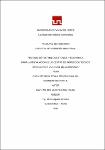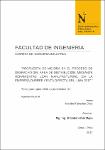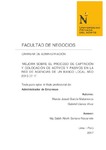Mostrar el registro sencillo del ítem
Mapping the benefits and the exchange values of provisioning ecosystem services using GIS and local ecological knowledge in a high-Andean community
| dc.contributor.author | Madrigal Martínez, Santiago | |
| dc.contributor.author | Puga Calderón, Rodrigo J. | |
| dc.contributor.author | Castromonte Miranda, Janina | |
| dc.contributor.author | Cáceres, Vladimir A. | |
| dc.date.accessioned | 2023-10-18T21:55:55Z | |
| dc.date.available | 2023-10-18T21:55:55Z | |
| dc.date.issued | 2023-04-10 | |
| dc.identifier.citation | Madrigal, S., Puga, R. J., Castromonte, J., & Cáceres, V. A. (2023). Mapping the benefits and the exchange values of provisioning ecosystem services using GIS and local ecological knowledge in a high-Andean community. Remote Sensing Applications: Society and Environment, 30(April 2023), 100971. https://doi.org/10.1016/j.rsase.2023.100971 | es_PE |
| dc.identifier.other | . | es_PE |
| dc.identifier.uri | https://hdl.handle.net/11537/34615 | |
| dc.description | El texto completo de este trabajo no está disponible en el Repositorio Académico UPN por restricciones de la casa editorial donde ha sido publicado. | es_PE |
| dc.description.abstract | Ecosystem services and their contribution to local economies and livelihoods still need to be fully understood and recognized by many policymakers. The primary purpose of this research is to integrate land use and land cover data and local ecological knowledge-based data with geographical information systems through a participatory approach to enhance natural resource management. We selected the Pariac-Rajucolta watershed as a study area because it is a typical landscape in the high-Andean mountains, with half of its territory inside a protected area. The methods involved a six-month participatory approach quantifying the benefits and exchange values of 33 provisioning ecosystem services, compiling the primary data from the locals and spectral information from Sentinel-2A. The results show that only agricultural and artificial areas delivered multiple benefits and offered the highest commercialization value of ecosystem services. The community mainly benefits from nutrition, materials, or energy from cultivated terrestrial plants, reared animals, wild plants, and surface water at the watershed level. At the same time, the services with high exchange proportions were mainly short -only meat of guinea pigs, manure, wild fruits, mushrooms, and wild plants for food. The abundance and the spatial distribution of benefits and exchange values of ecosystem services displayed a pattern of high quantity for the downstream and low in the basin's top and midstream of the watershed (inside the protected area). In conclusion, the study shows the importance of knowing ecosystem services benefits and exchange values as an initial approach to developing participatory strategies for managing and conserving natural resources. | es_PE |
| dc.format | application/pdf | es_PE |
| dc.language.iso | spa | es_PE |
| dc.publisher | Elsevier B.V. | es_PE |
| dc.rights | info:eu-repo/semantics/closedAccess | es_PE |
| dc.source | Universidad Privada del Norte | es_PE |
| dc.source | Repositorio Institucional - UPN | es_PE |
| dc.subject | Ecosistemas | es_PE |
| dc.subject | Áreas protegidas | es_PE |
| dc.subject | Servicios ecosistémicos | es_PE |
| dc.title | Mapping the benefits and the exchange values of provisioning ecosystem services using GIS and local ecological knowledge in a high-Andean community | es_PE |
| dc.type | info:eu-repo/semantics/article | es_PE |
| dc.publisher.country | PE | es_PE |
| dc.identifier.journal | Remote Sensing Applications: Society and Environment | es_PE |
| dc.subject.ocde | https://purl.org/pe-repo/ocde/ford#2.07.01 | es_PE |
| dc.description.sede | Trujillo El Molino | es_PE |
| dc.identifier.doi | https://doi.org/10.1016/j.rsase.2023.100971 |
Ficheros en el ítem
| Ficheros | Tamaño | Formato | Ver |
|---|---|---|---|
|
No hay ficheros asociados a este ítem. |
|||




